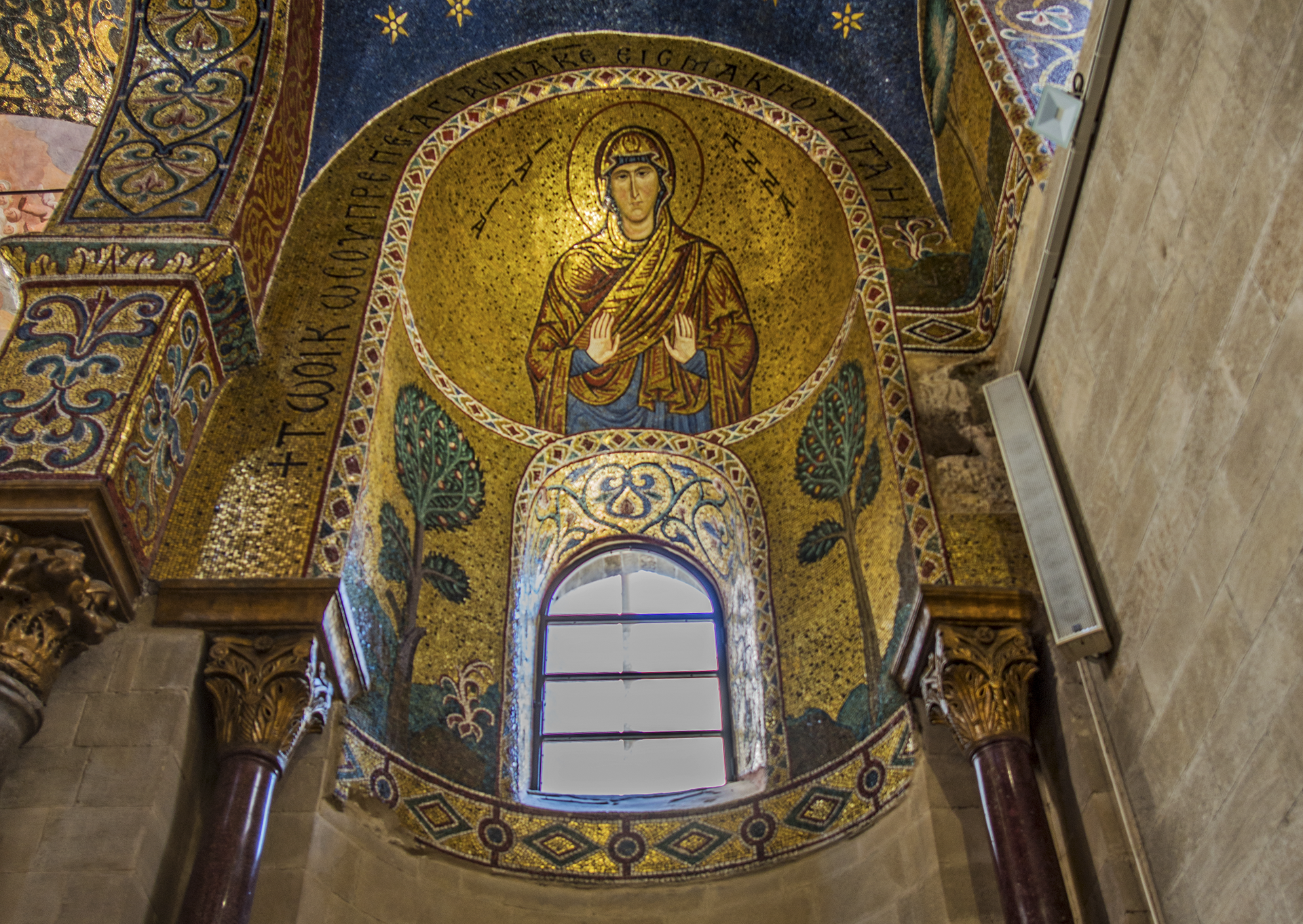George of Antioch, who also commissioned the great bridge, known as the
Admiral's Bridge
, originally built over the
Oreto river
in Palermo, had the church built in honour of the Virgin, reflecting his multifaceted Greek Orthodox faith and Arab-Greek culture.
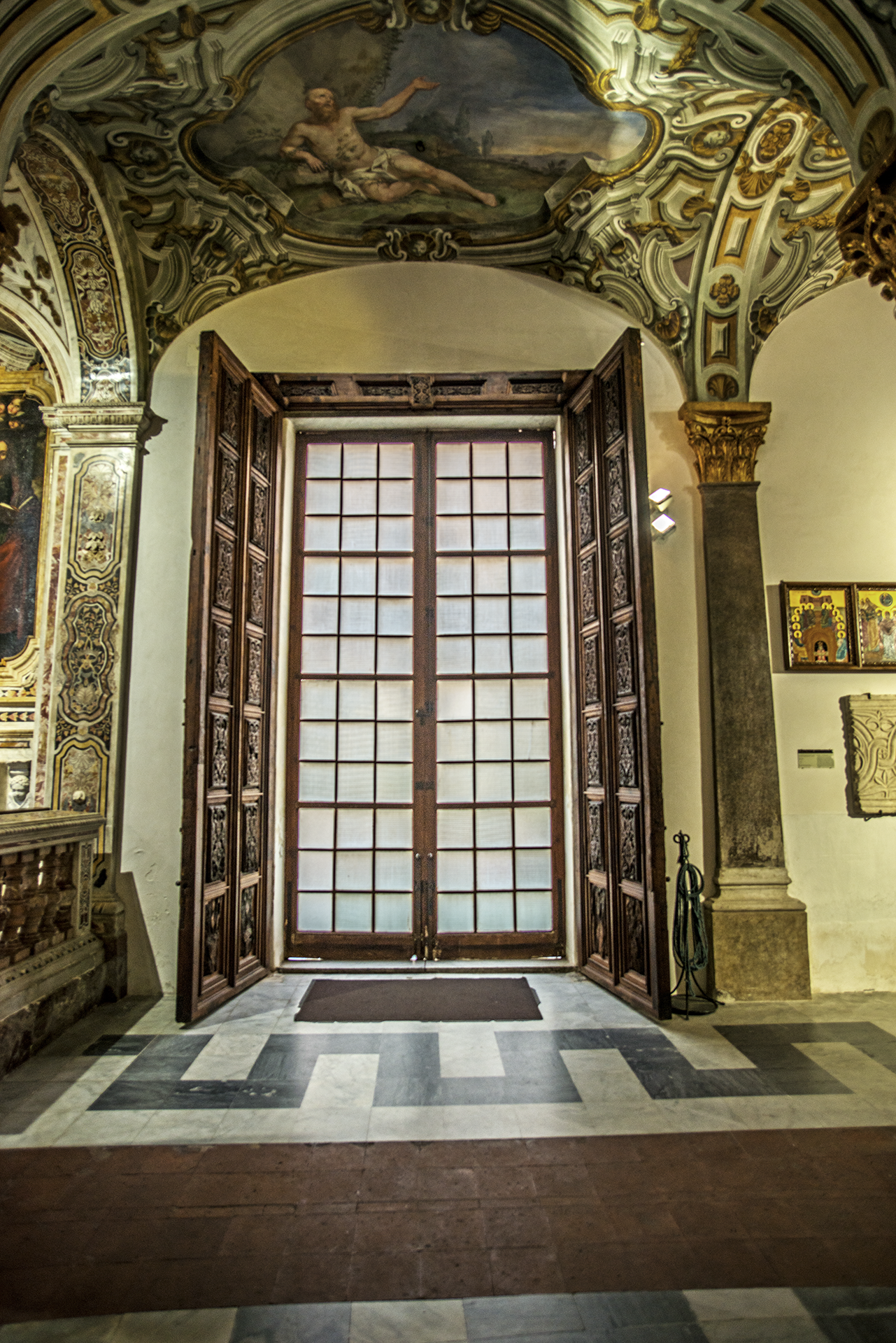 In fact, the church has a unified Byzantine style, but also elements of Islamic derivation, such as the original wooden door, now in the southern entrance, with Fatimid school carved panels, and the
porphyry
In fact, the church has a unified Byzantine style, but also elements of Islamic derivation, such as the original wooden door, now in the southern entrance, with Fatimid school carved panels, and the
porphyry
columns in the corners of the
presbytery
.
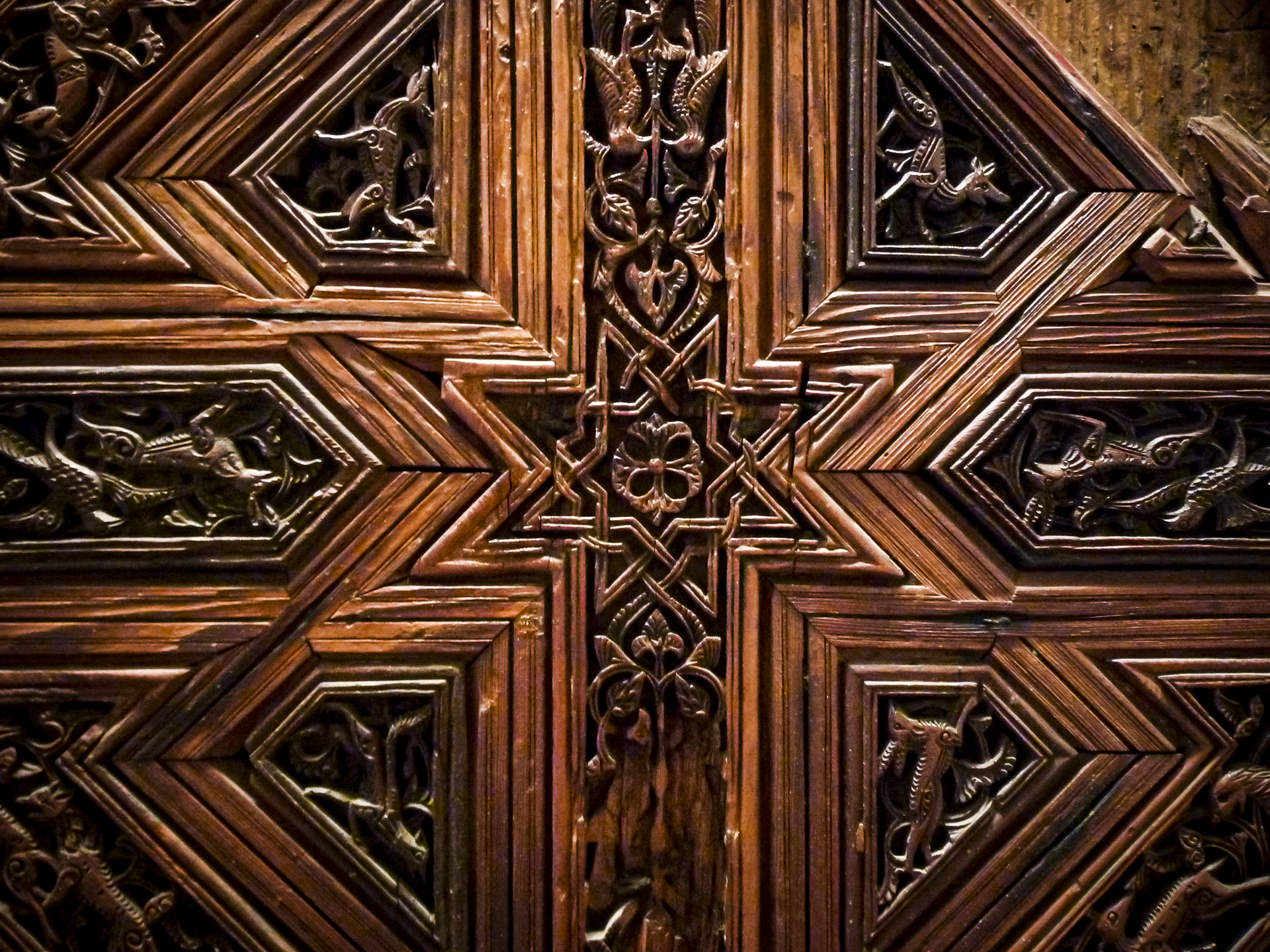 The interior, in the form of a Greek cross set within a square, typically Byzantine, had even more oriental characteristics before it was remodelled between 1600 and 1700 to adapt it to the Latin rite, changing its original shape.
The interior, in the form of a Greek cross set within a square, typically Byzantine, had even more oriental characteristics before it was remodelled between 1600 and 1700 to adapt it to the Latin rite, changing its original shape.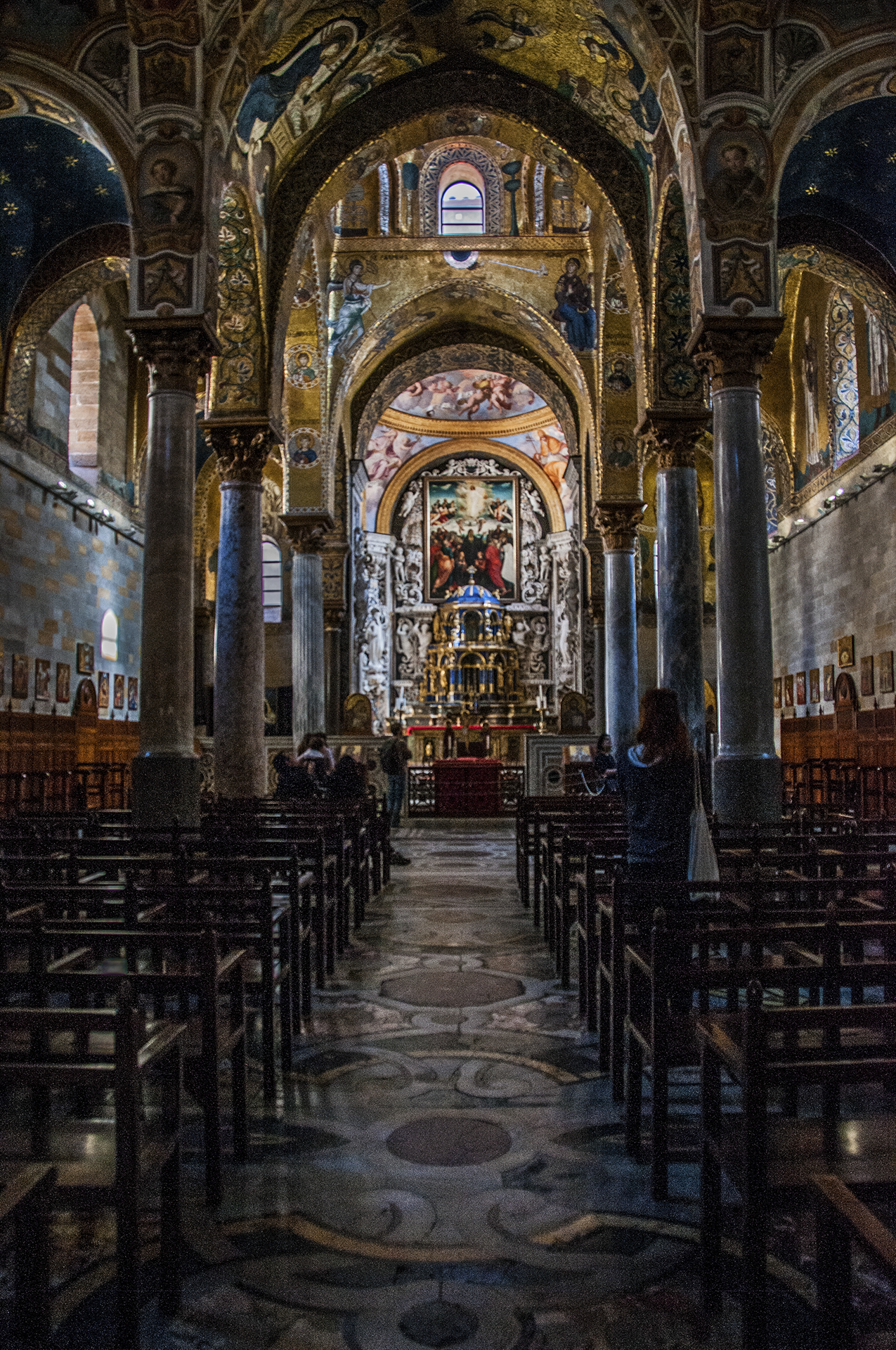 The interior of the church is structured in nine bays, distinguished by four columns that form a square space in the centre and support the dome. The
Greek-cross and triapsidal
The interior of the church is structured in nine bays, distinguished by four columns that form a square space in the centre and support the dome. The
Greek-cross and triapsidal
layout has horizontal arms with
barrel vaulted roofing
, while the bays in the corners are perfectly square and have a cross-shaped roof. All of the vaults arches are of slight
ogival shape
.
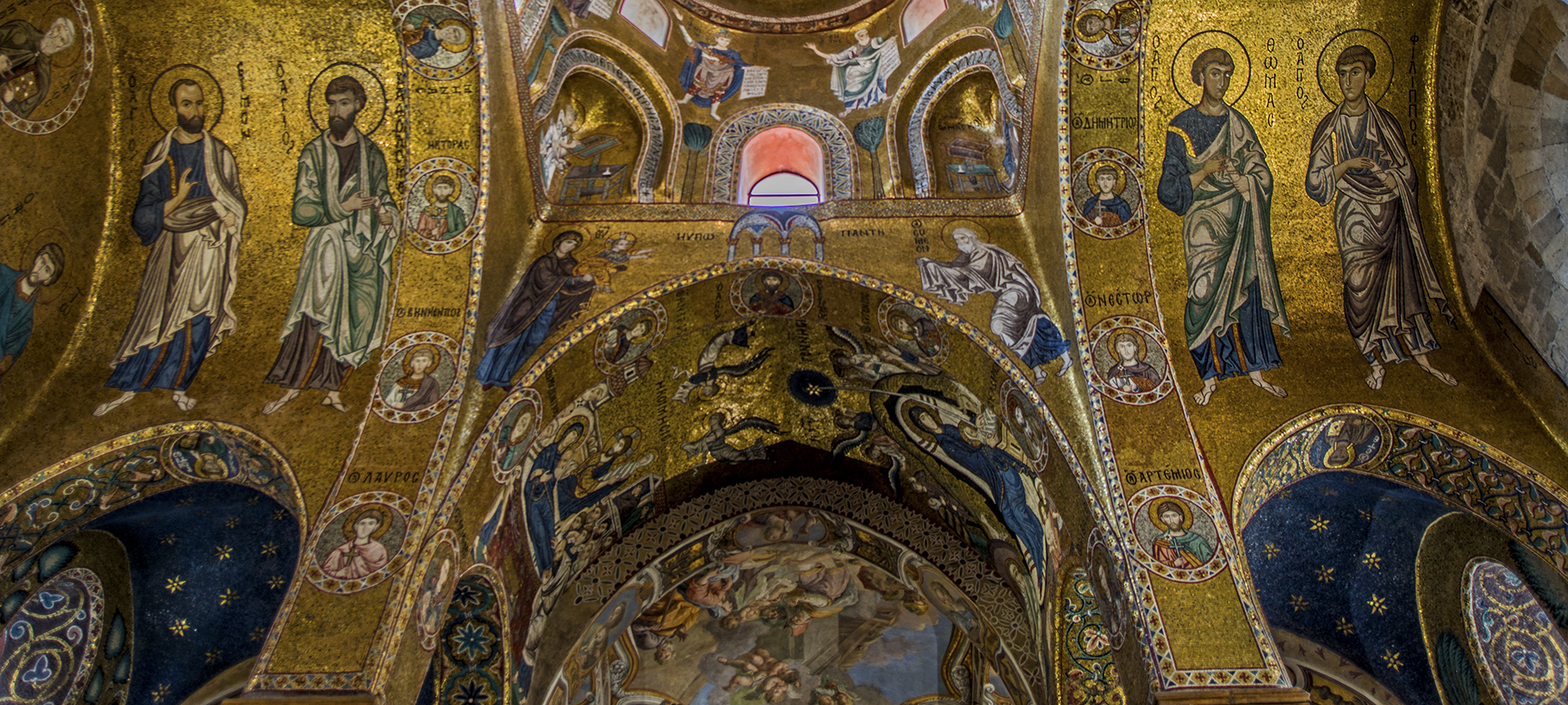 The interior focal point of the building is the
Bema
The interior focal point of the building is the
Bema
, room located on the east side, which includes the three
apses
. One of these, the central one, was replaced at the end of the 1600s, based on a design by the architect
Paolo Amato
, by a large chapel,
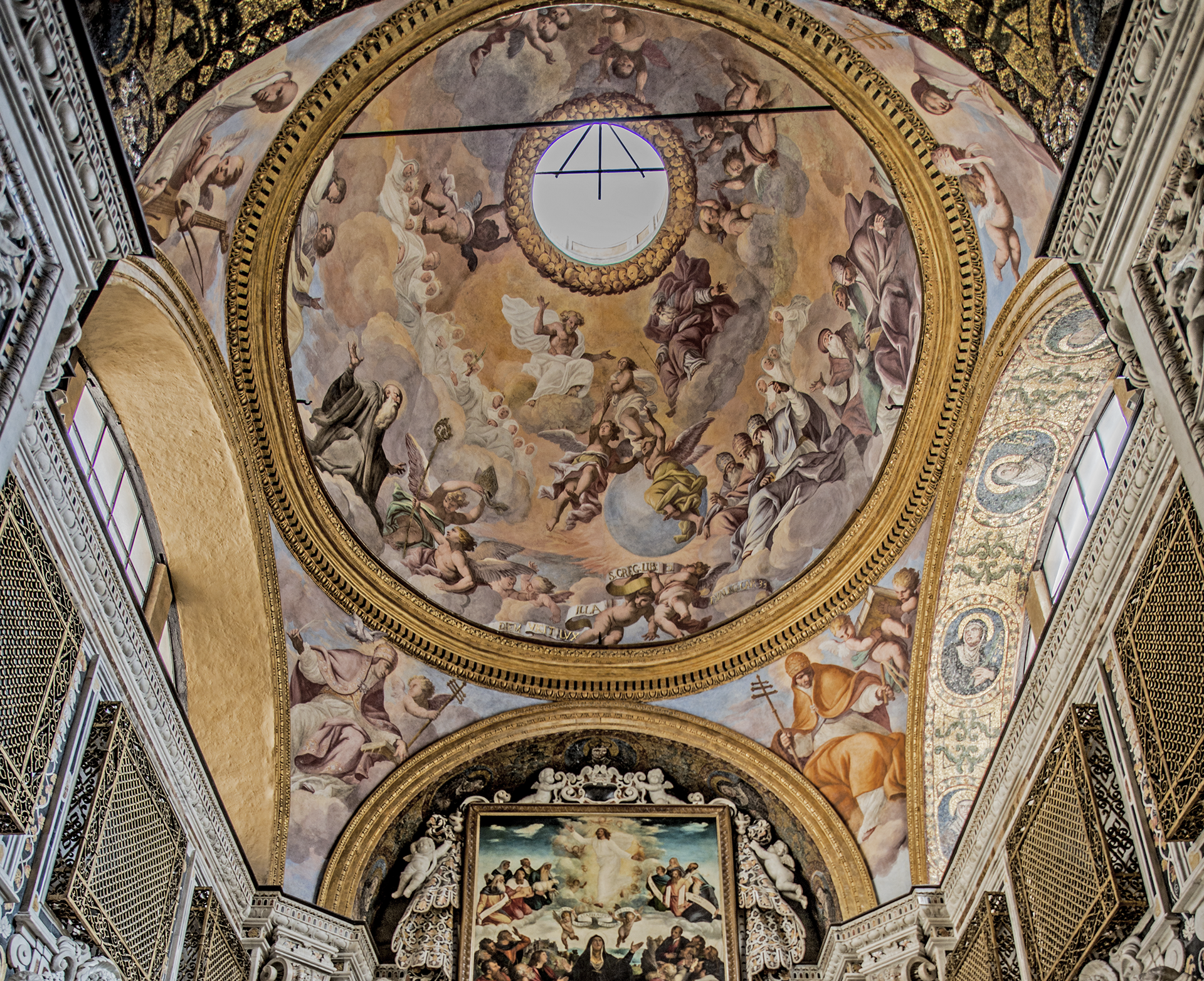 frescoed and decorated with marble and adorned with a lapis lazuli altar. The entire sacred space, elevated by 26 centimetres, was separated from the rest of the church
by the iconostasis
frescoed and decorated with marble and adorned with a lapis lazuli altar. The entire sacred space, elevated by 26 centimetres, was separated from the rest of the church
by the iconostasis
,
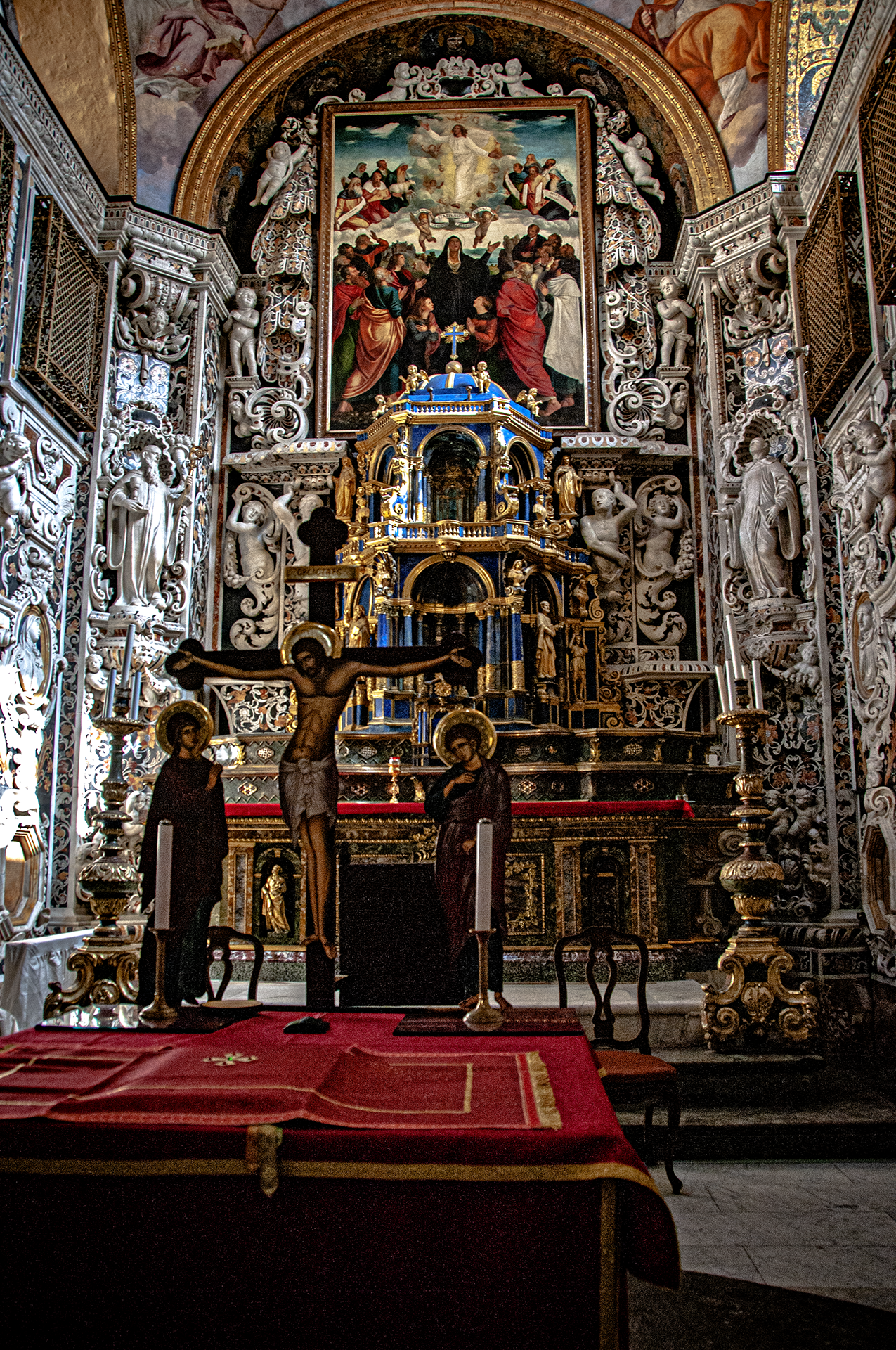 an enclosure, typical of Greek worship, made of marble slabs and aligned with the columns. Signs of the iconostasis are still partially visible today in the shafts and bases of the columns.
an enclosure, typical of Greek worship, made of marble slabs and aligned with the columns. Signs of the iconostasis are still partially visible today in the shafts and bases of the columns.![]() The interior lighting, which creates a rich interplay of light with the mosaic decoration, is provided by the dome’s eight windows and the ogival-arched windows in the side bays and the apses, which are wider in the arms of the cross than in the four corners.
The interior lighting, which creates a rich interplay of light with the mosaic decoration, is provided by the dome’s eight windows and the ogival-arched windows in the side bays and the apses, which are wider in the arms of the cross than in the four corners.